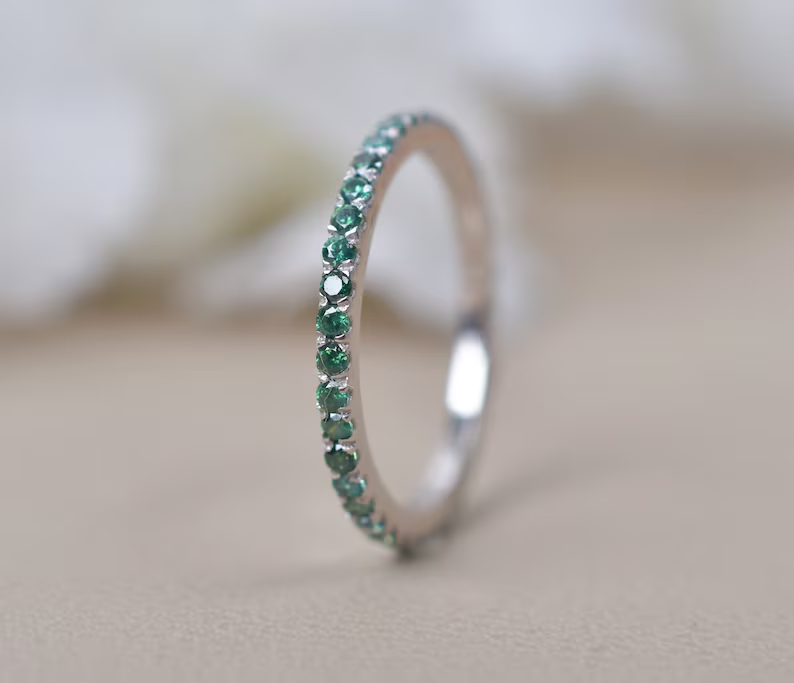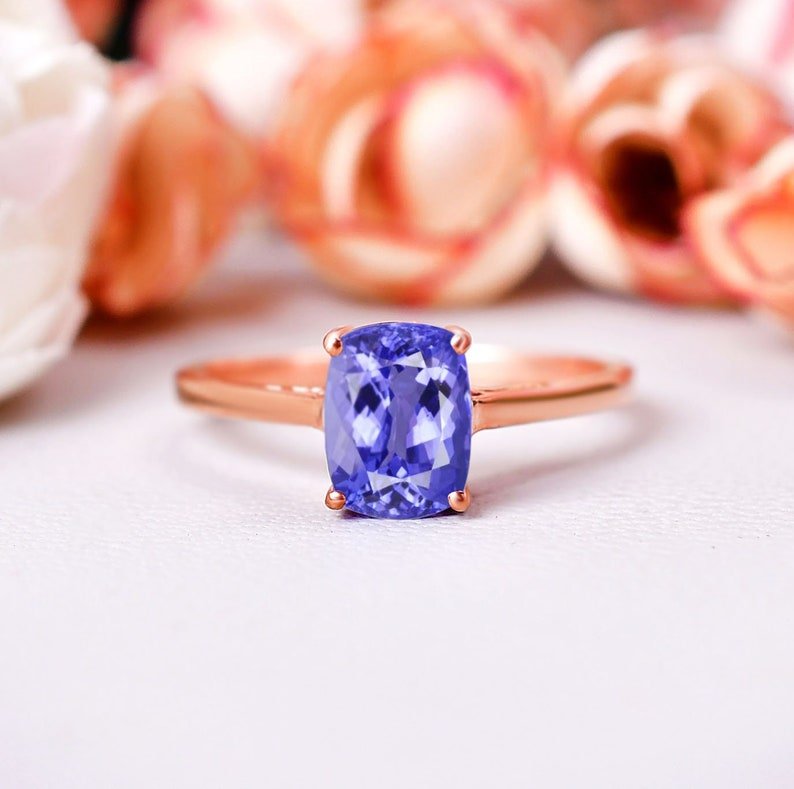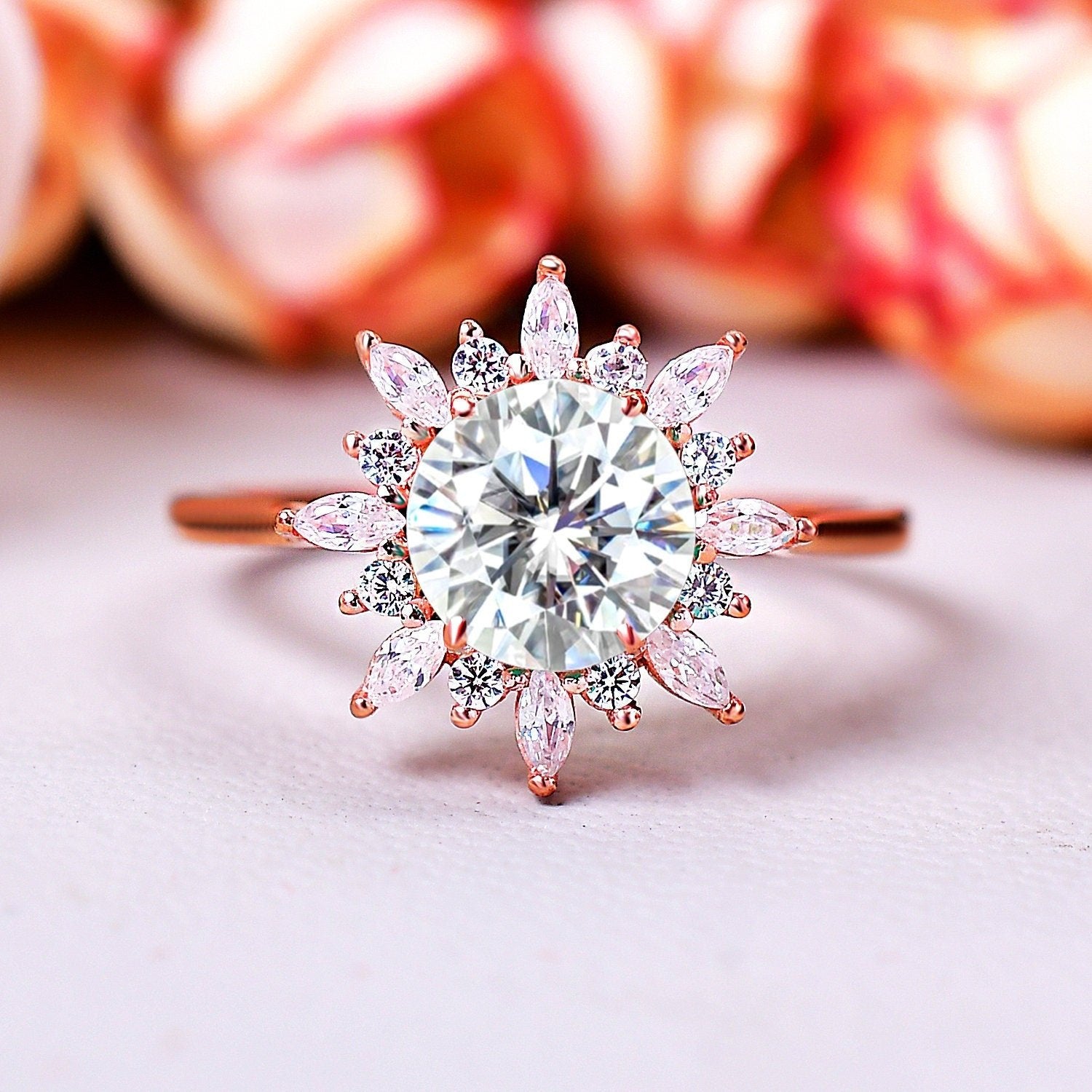Promise Ring or Engagement Ring: What’s the Difference?
Share

Imagine a simple question from your friend. She is figuring things out in their relationship. She wants a promise ring, not an engagement ring. That’s why understanding the nuances between a promise ring vs engagement ring matters. It’s not just about a piece of jewelry; it’s about what that piece of jewelry says about your relationship, your intentions, and your future.
What you’ll learn in this guide is the real talk on these two symbols of commitment. We’ll break down their meaning, when to use each one, and how to navigate the conversation with your partner, family, and friends.
What is a Promise Ring?
Let’s start with the basics. Think of it as a pre-engagement ring or a placeholder for future commitment. The promise could be anything from a pledge of fidelity and loyalty to a promise to get engaged one day when the time is right. It’s a way for a couple to say, "I'm serious about you, and this is where my heart is." It’s often used by young couples who aren’t ready for the financial or life-altering commitment of marriage, or by couples who are in a long-distance relationship and want a tangible way to show their devotion.
Typical Occasions
Anyone can use a promise ring, including a couple that feels their bond has reached a new level of seriousness. It's not tied to a formal proposal event. A partner might present one on an anniversary, a birthday, or just on a random evening to say, "I love you, and I promise to be with you for the long haul."
Symbolism and Meaning
A promise ring is personal. It doesn’t follow strict rules. For most couples, it’s just a simple way to say, “we’re serious about each other, but we’re not ready to set dates yet.” It’s less about showing off and more about showing love. It’s a symbol of hope and the future.
Promise Ring Designs and Common Styles
Promise rings don’t usually scream for attention. They’re smaller, lighter, and easier to wear every day. You'll often see them featuring smaller, less expensive gemstones, such as cubic zirconia, birthstones, or a small diamond. Common designs include:
- Solitaire: A single, small stone.
- Heart-shaped: Two hearts intertwined or a single heart-shaped stone.
- Claddagh: An Irish ring featuring two hands holding a heart, often with a crown, symbolizing love, loyalty, and friendship.
Also Read: Engagement Ring vs Wedding Ring: Know the Difference
What is an Engagement Ring?
An engagement ring is a ring given at the time of a formal proposal. Its purpose is clear and universally understood: it’s a public and private declaration of the intent to marry. The person who accepts the ring is saying, "Yes, I will marry you."
The tradition of giving engagement rings dates back centuries. The Romans used to give rings to signify ownership, but the modern tradition of a diamond engagement ring really took off in 1477 when Archduke Maximilian of Austria proposed to Mary of Burgundy with a diamond ring. Since the famous “A Diamond Is Forever” campaign in 1947, diamonds and classic settings like solitaires, halos, and three-stone rings have been tied closely to proposals.
Symbolism and Meaning
The symbolism is profound. It’s a legally and socially recognized step toward marriage. The engagement period is a time for couples to formally announce their upcoming union to family and friends, and the ring is the primary symbol of that announcement.
Typical Designs, Gemstones, and Styles
This is where you see the big difference in cost and design. An engagement ring is typically a significant investment, often featuring a prominent center stone.
- Gemstones: Diamonds are the most traditional choice, but we’re seeing a big trend toward alternative stones like sapphires, moissanite, and emeralds.
- Settings: Popular settings include the classic solitaire, halo, and three-stone rings.
Explore: Engagement Ring Styles: Everything You Need to Know
The Differences Between Promise Ring vs Engagement Ring
This is the heart of the matter. While both rings are about commitment, their purpose and meaning are worlds apart. Let's break down the key distinction between a promise ring vs engagement ring.
Meaning and Significance
- Promise Ring: This is a symbol of a commitment or intention without legal binding. It’s a private agreement between two people. You’re promising to be loyal and committed to each other, with the understanding that marriage might be in the future, but it's not the immediate plan.
- Engagement Ring: This is an official declaration of intent to marry. It's a formal step that precedes the legal and social contract of marriage. When someone wears an engagement ring, everyone knows they are officially "off the market" and on the path to getting married.
The emotional weight attached to each ring is different, too. A promise ring feels like a beautiful, private moment. An engagement ring, on the other hand, comes with the public excitement of a proposal, wedding planning, and the official announcement.
Quick Tip: Where to Wear Your Engagement Ring?
Timing and Relationship Stage
- Promise Ring: Often given in the early to middle stages of a serious relationship. This is when a couple is past the initial dating phase but not quite ready to plan a wedding. Think of it as a stepping stone.
- Engagement Ring: Comes into play when a couple has a clear, mutual understanding that they are ready to plan and commit to marriage. There's usually a definitive timeline, whether it's six months or two years.
Design and Cost Differences
This is perhaps the most visible distinction.
- Promise Rings: Are generally simpler, less expensive, and have versatile styles. They prioritize sentimental value over monetary worth. It’s not about the carat size; it’s about the promise itself.
- Engagement Rings: Are usually a much higher cost and are often a significant financial investment. The designs tend to be more elaborate, to create a stunning, lasting piece of jewelry that will be worn for a lifetime. This is a crucial difference when we talk about promise ring vs engagement ring.
Explore: Types of Rings You Should Know Before Buying One
Cultural and Social Expectations
- Promise Rings: Their social understanding is more personal and less formal. You might need to explain its meaning to others, as it's not a universally recognized step. This is especially true for the promise vs engagement ring conversation.
- Engagement Rings: The social expectation is clear and widely understood. The moment someone sees an engagement ring, they know a wedding is on the horizon.
Modern couples are embracing personalized rings more than ever. The old rules are changing, and a simple, custom-designed ring can serve as both a promise and an engagement ring, depending on the couple's intentions.
When to Choose a Promise Ring Over an Engagement Ring
So when does a promise ring make more sense than an engagement ring? Honestly, it depends a lot on your situation. Not every couple is ready for marriage, and that’s okay. A promise ring steps in when love is strong but the timing, money, or circumstances aren’t quite lined up yet.
Think about where you are in life. Maybe you’re still in college, juggling classes and exams, or living in different countries trying to make long-distance work. You might not be ready to plan a wedding, but you do want a way to show each other that the relationship is serious. That’s where a promise ring shines. It’s commitment, but without the stress of setting dates and making big announcements.
Money is another big factor. Engagement rings can be pricey, sometimes more than what feels comfortable when you’re paying off loans or saving for a house. A promise ring is a more practical option. It shows the same intention, love, loyalty, and future plans but doesn’t leave you drowning in credit card debt.
Then there are personal or cultural reasons. Some couples just don’t like following traditions step by step. They’d rather create their own version of commitment. A promise ring fits nicely into that mindset. It’s private, it’s personal, and it feels like yours instead of something borrowed from social expectations.
And if you’re long-distance? A small ring can carry a lot of weight. It’s something to hold onto when time zones and miles get frustrating. It acts like a reminder that you’re both working toward the same future.
Helpful Guide: How to Measure Ring Size at Home
When to Choose an Engagement Ring Instead of a Promise Ring
There are also clear times when a formal engagement ring is the right choice.
- Clear Intent to Marry Soon: If you and your partner have discussed marriage, are ready to commit, and are prepared to plan a wedding in the near future, an engagement ring is the appropriate next step.
- Cultural or Family Expectations: For many, the act of a formal proposal and an engagement ring is a deeply ingrained cultural tradition. Your families might expect it as the official way to announce your plans.
Final Thoughts
At the end of the day, a ring is just a ring. What gives it meaning is the story behind it. The labels don’t matter nearly as much as the love behind them. Because at the end of the day, it's not about the size of the stone or the price tag; it's about the promise of a shared future.
FAQs
Q1. Can a promise ring replace an engagement ring?
Not really. A promise ring is more about showing love and commitment, but it doesn’t carry the same meaning as an engagement ring, which clearly says, “We’re getting married.”
Q2. Are promise rings legally binding?
Nope. A promise ring is just symbolic. It doesn’t hold any legal value or act as a contract.
Q3. Can men wear promise rings or engagement rings?
Of course. These days, many men wear promise rings, and some even wear engagement rings too. Some couples even go for matching rings as a way of showing equal commitment.
Q4. What do you call a ring that’s both a promise and engagement ring?
There’s no special name. If a couple chooses one ring to serve both roles, that’s totally their call; it just makes the gesture more personal and unique.
Q5. How do you explain promise rings vs engagement rings to others?
Keep it casual. You might say, “This ring is a symbol of our commitment,” or “It’s a step toward our future together.” That’s usually all people need to understand the difference.



